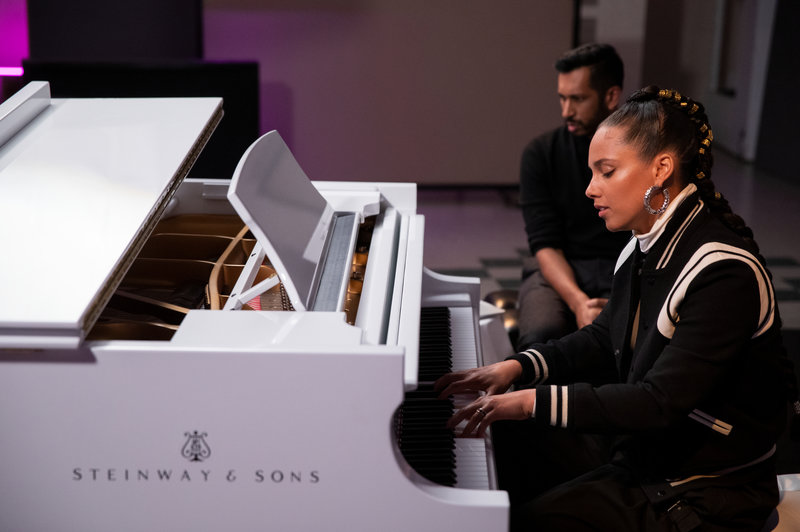
News
Cambridge Residents Slam Council Proposal to Delay Bike Lane Construction

News
‘Gender-Affirming Slay Fest’: Harvard College QSA Hosts Annual Queer Prom

News
‘Not Being Nerds’: Harvard Students Dance to Tinashe at Yardfest

News
Wrongful Death Trial Against CAMHS Employee Over 2015 Student Suicide To Begin Tuesday

News
Cornel West, Harvard Affiliates Call for University to Divest from ‘Israeli Apartheid’ at Rally
‘Song Exploder’ Proves That Podcasts Should Remain Podcasts

The explosive popularity of Netflix’s quarantine docu-series — for example, “Tiger King” or “Jeffrey Epstien: Filthy Rich” — has spurred a mass influx of similar single-season productions. Netflix’s new show, “Song Exploder,” is no exception. Based on Hrishikesh Hirway’s podcast, “Song Exploder,” the series traces the origins of four songs ranging from R.E.M. 's “Losing My Religion” to Ty Dolla $ign’s “LA.” While there isn’t anything inherently bad about this show, there isn’t much that’s good. Hirway’s podcast stood firmly on its own, and its translation into a visual medium is entirely unnecessary.
Each episode is centered around interviews that Hirway conducts with each of his guests. The show is edited to provide a concise but detailed narrative of each musician’s artistic process, and while it is interesting to see the artists speak about their works themselves and play their instruments, there’s really no need for it. The entertainment value only marginally increases with this visual aspect. To keep the attention of the viewers, there are some graphics inserted throughout the episodes, but the fact that this attention-grabbing is necessary is telling.
The interview builds the storyline through the exploration of each layer of the episode’s song, culminating in a performance of the full song, accompanied by an original music video. The video has potential as the only opportunity for it to embrace the visual medium, but even then, it falls short. The music video for Ty Dolla $ign’s song “LA” is mainly B-roll footage with the lyrics superimposed on the shots. While this allows the song’s lyrics to take center stage, there aren’t many visual elements that inspire interest in the video itself. In the episode for Lin-Manuel Miranda’s “Wait for It,” the music video feels like something out of a TED Talk or an episode of Vox’s “Explained.” The powerful song demands visuals stronger than simple line graphics. The videos seem to undercut the music rather than enhance it.
Visual aspects removed, the interviews and exploration of the songs are great. The interviews that Hirway conducts are consistent, and they cover the same issues while allowing the artists space for their own narratives and commentary. Hirway organizes the questions so that each individual element of the song is dissected and explored in a chronological fashion, and the ends of the episodes — where everything finally comes together — are very satisfying.
Everything about this show makes sense in podcast form. The visual content, however, adds nothing to the story of how each song was made. The first episode is the only episode that had real footage of the production of Alicia Keys’ single “Three Hour Drive,” which justified the visual translation. Beyond that, all of the content of the show lies within the audio tracks of the interviews.
To its credit, the show seems to be aware of this shortcoming, and it attempts to match the tonal quality of the music with the tonality of the video composition. The first episode pairs Alicia Keys a laid-back ambiance with soft blue lighting and shots of water and rain. The last episode cuts to B-roll of Ty Dolla $ign smoking a cigarette, matching the free-flowing nature of his lyrics and music. While these shots are visually appealing, they feel like filler.
The tonality of the music can be understood by listening to the music. The musicians will often describe the feelings that they felt while hearing the individual elements of their songs and how they chose to incorporate them into the music. In the first episode, Sampha, a singer-songwriter collaborator on Alicia Keys’ song, says the opening has “a bit of sweetness to it, and sort of, like, a longing.” This quote alone describes the tone of the music and negates any necessity for a visual translation of it other than for aesthetic purposes.
Overall, “Song Exploder” is still entertaining and easy to watch, something to have playing in the background of a meal or another activity. You could follow along without having to fully invest yourself. Did it need to be made? Probably not. Could you get the same experience by listening to the original podcast? Probably so.
Want to keep up with breaking news? Subscribe to our email newsletter.
